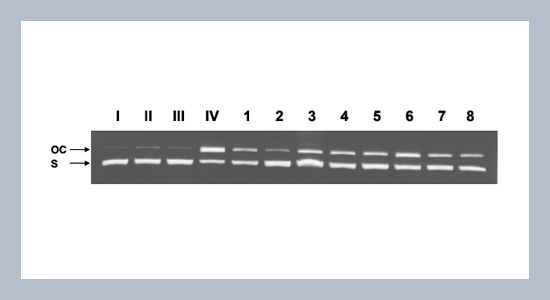Lie-Fen Shyura*, Jieh-Hen Tsunga, Je-Hsin Chenb, Chih-Yang Chiua, and Chiu-Ping Loa a Institute of BioAgricultural Sciences, Academia Sinica, Taipei 115, Taiwan, R.O.C.
b Department of Biochemical Engineering, Hwa Hsia Institute of Technology, Taipei 111, Taiwan, R.O.C.
Download Citation:
|
Download PDF
We have examined antioxidant activities of twenty-six medicinal herbal extracts that have been popularly used as folk medicines in Taiwan. The results of scavenging DPPH radical activity show that, among the 26 tested medicinal plants, Ludwigia octovalvis, Vitis thunbergii, Rubus parvifolius, Lindernia anagallis, and Zanthoxylum nitidum exhibited strong activities and their IC50 values for DPPH radicals were 4.6, 24, 27, 36, 50 g/mL, respectively. As for the superoxide anion scavenging activity (IC50, g/mL), the top five most significant activities were observed in plant extracts of Ludwigia octovalvis (26 g/mL), Vitis thunbergii (58 g/mL), Prunella vulgaris (113 g/mL), Saurauia oldhamii (124 g/mL), and Rubus parvifolius (151 g/mL). The IC50 values for DPPH and superoxide anion of catechin (positive control) were 2.5 and 7.2 g/mL, respectively. It was also observed in the present study that, at 1 mg/mL, Ludwigia octovalvis and Bombax malabaricum exhibited significant protection on ψx174 supercoiled DNA against strand cleavage induced by UV irradiated H2O2 with a superior or compatible effect to that of catechin.ABSTRACT
Keywords:
antioxidant activity; medicinal herbs; reactive oxygen species; Ludwigia octovalvis. * Corresponding
Share this article with your colleagues
REFERENCES
ARTICLE INFORMATION
Accepted:
2005-12-04
Available Online:
2005-12-13
Shyur, L.-F., Tsung, J.-H., Chen, J.-H., Chiu, C.-Y., Lo, C.-P. 2005. Antioxidant properties of extracts from medicinal plants popularly used in Taiwan. International Journal of Applied Science and Engineering, 3, https://doi.org/10.6703/IJASE.2005.3(3).195
Cite this article:






